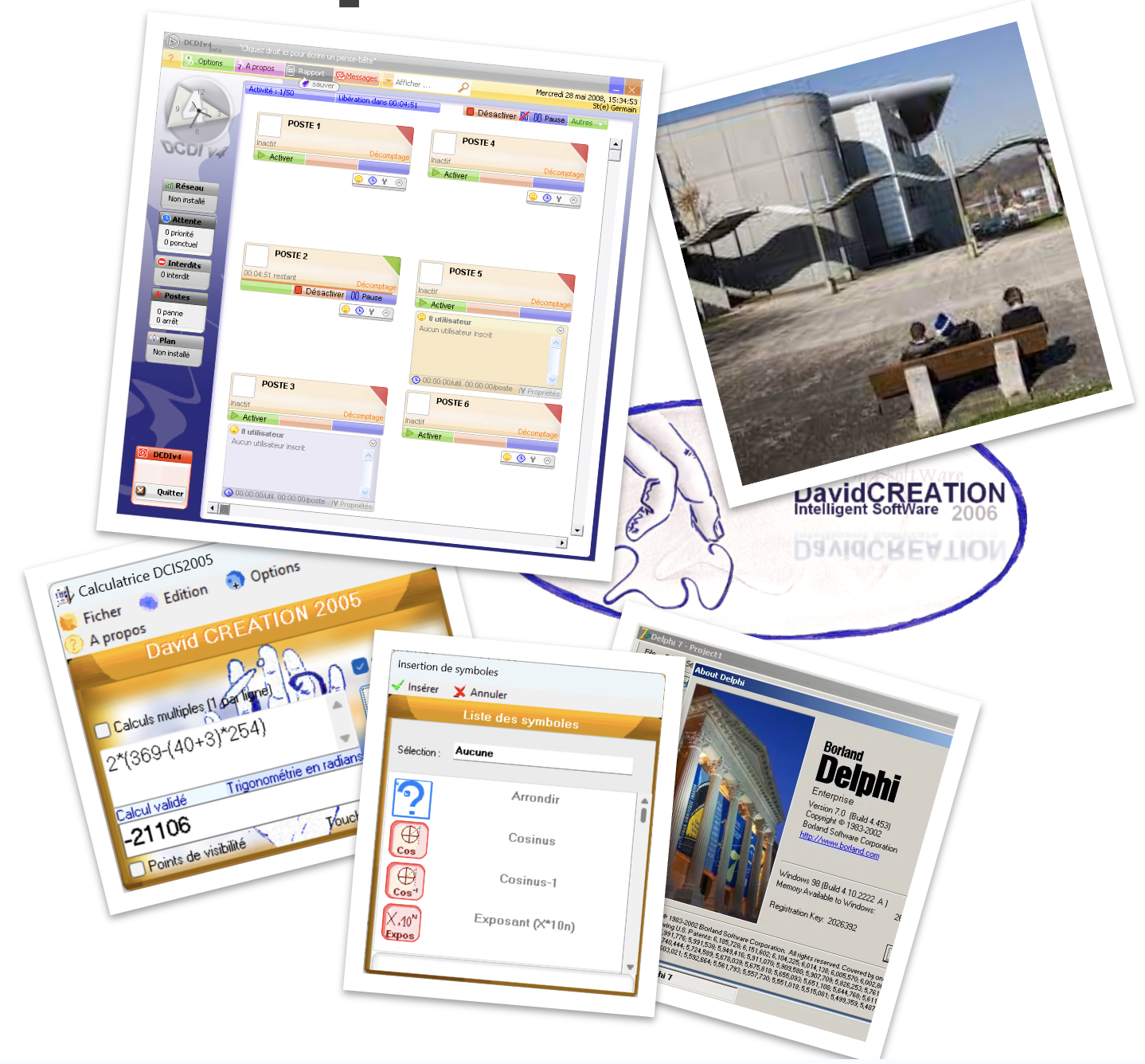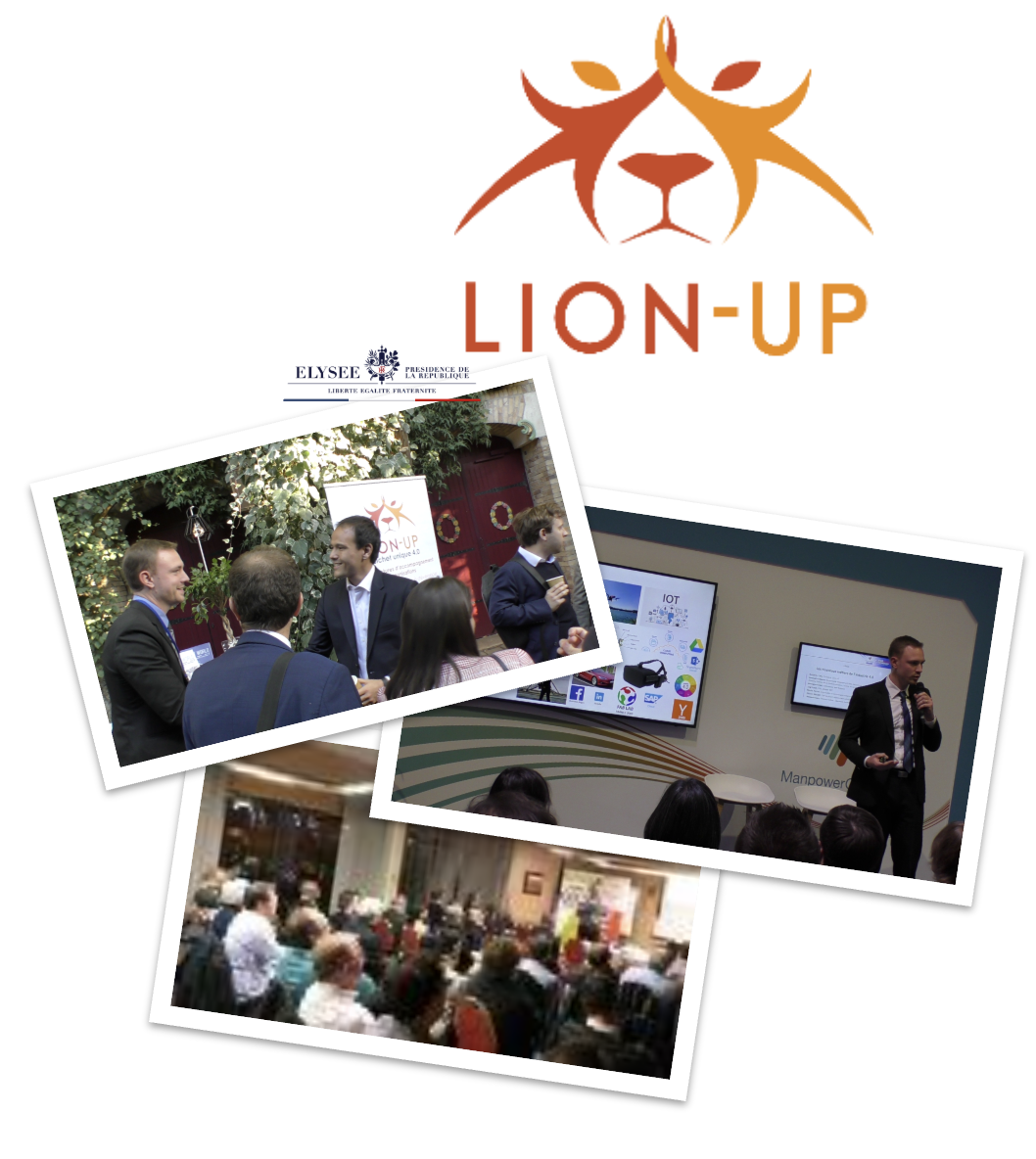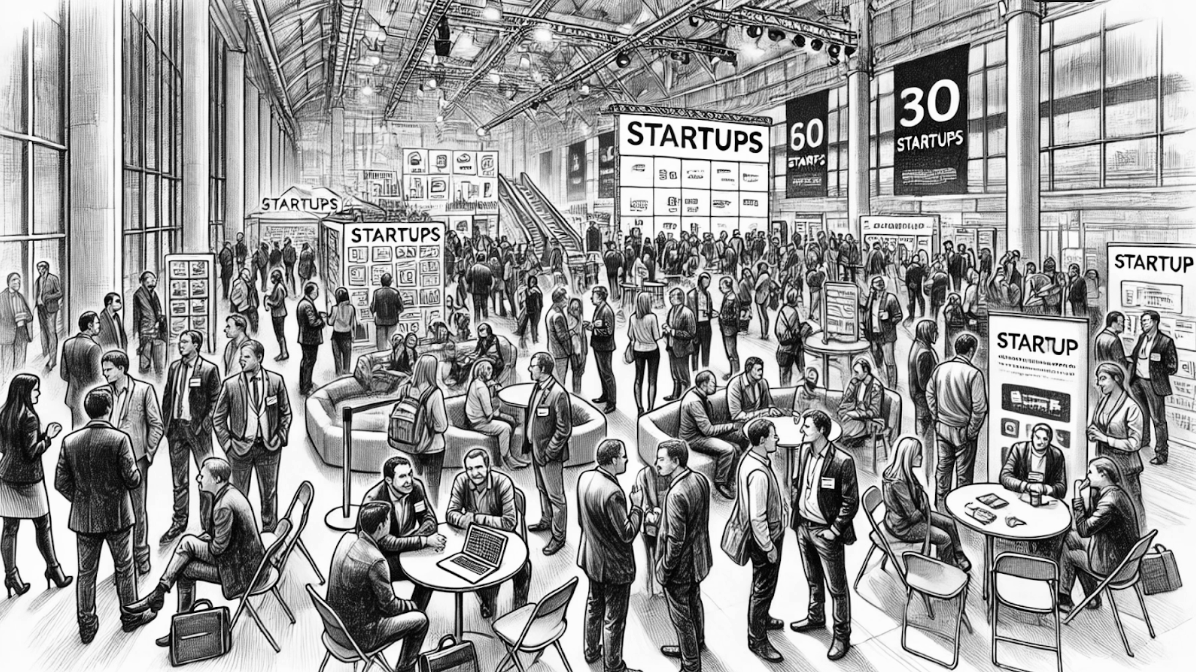Who is David Leblanc, the Author of Impact Factories?
What elements could give full credibility to my book?
The answer led me to share with you the story of my passion for challenge and innovation below. Enjoy your reading!
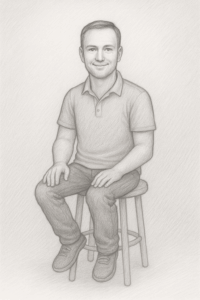 Learn. Create. Share.
Learn. Create. Share.
These three verbs have always been a part of my life—long before I discovered that they formed the basis of a movement: the Makers.
Makers are people who don’t just ask questions: they build answers. Literally. With their hands, their brain, their energy. They are people who experiment, tinker, test, and learn by doing before seeking out the theory. They have a curious, sometimes obsessive mind, always driven by the desire to understand by doing. And above all, they are people who share what they learn, so that others can go further, faster, differently.

I am part of that tribe. Present me with a puzzle at the beginning of a meal, and you risk losing my mental presence until dessert. Some problems haunt me for months, even years. Until I find a valid answer, I don’t give up. But thinking isn’t enough: I need to experience the answer, test it, build it myself, in real life, where things happen, where things fail, where things are learned.
And once I’ve understood something, I have only one desire: to pass it on. To share it. To confront it with other perspectives in order to continue to progress. And it is this maker mindset that permeates this entire book. I invite you to get to know me here by sharing some of the questions that have literally changed my life.
“How do you develop software?”
That was the question that obsessed me at age 15. At the time, I was studying for a high school diploma in Industrial Science and Technology, specializing in electronics. The internet was still billed by the minute and was all the rage among teenagers my age. Mobile internet was called WAP and was nothing to write home about. High school students had to wait a long time to access the few computers available for their research, and librarians had to manage the flow of these increasingly numerous users with watches and stopwatches. To solve this problem, I developed a simple but effective software program: it managed traffic using counters, used a voice synthesizer to announce the end of usage time, and produced a daily report on consumption. This project was a revelation. Buoyed by this momentum, I then created a dozen tools for different audiences, which I distributed on my personal website trousseaoutils.com. At the end of my high school studies, I was fortunate to have as my technical subject a line-following robot equipped with an obstacle detection system. That’s where I was able to make the connection between computer programming, electronics, and robotics. This growing passion naturally led me to pursue engineering studies in information systems, at the crossroads of electronics and computer science, at ESIEA, an engineering school specializing in computer science and electronics.
“How do simple ideas become great innovations?”
This was the new question that preoccupied me in my twenties, halfway through my studies. I quickly put together a team to develop the first elements of a robot and the necessary design documents. The following year, I decided to launch the Aquatis project with a clear goal: nine months to build an autonomous underwater robot for the SAUC-E competition organized by NATO.
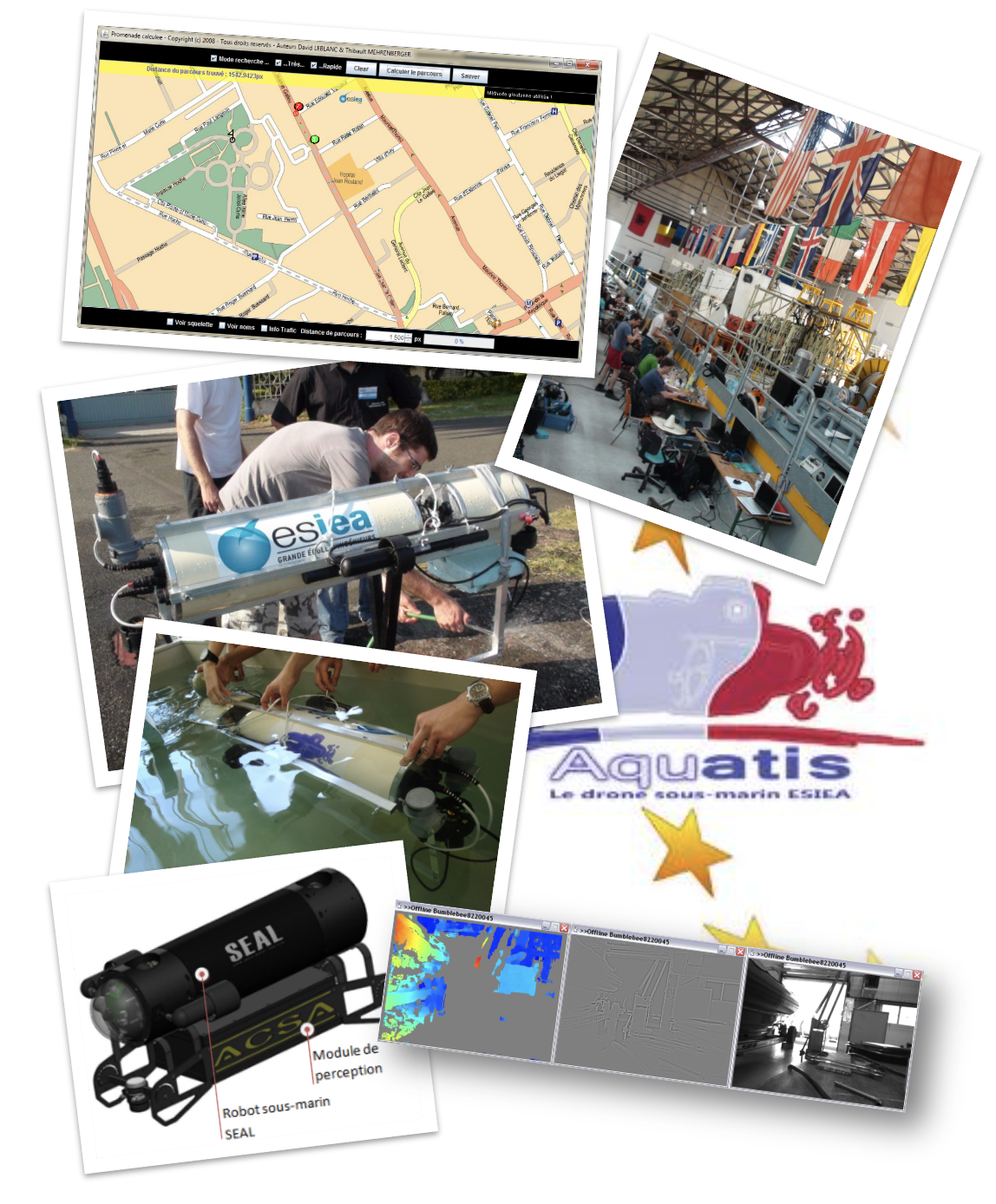
This competition brought together the best European universities. In 2010, thanks to a close-knit and passionate team of 14 students, we proudly reached the final of the competition.
Stunned. That’s the word I would use to describe the day after the competition. We had managed to go well beyond our goals. I had spent two years with short nights and no breaks to contribute to this result, and the end of the competition meant the abrupt end of a project for me. I looked around me and realized that I had missed something important: passionate and overwhelmed by technological issues, I couldn’t see the meaning of what we had achieved. Where was robotics hidden in our daily lives? What was its usefulness beyond that promoted by the competition to clear underwater minefields and prevent oil spills?
So I began my research, created the blog shyrobotics.com, and started writing to share my findings and get feedback. In two years, I published 450 articles that helped me understand what I had gotten myself into. The site was a great success, attracting up to 600 unique visitors per day, and allowed me to meet some fascinating people—including French MP Bruno Bonnell, author of Viva la Robolution, who admitted to knowing my blog. Meanwhile, I met Frédéric Boisdron, co-founder and editor-in-chief of Planète Robot magazine, at an Apérobo event. He opened the door to a new role for me: that of a journalist specializing in robotics for Planète Robots magazine. This was in addition to my full-time job. My first interviews led me to talk with major figures in the field, such as Colin Angle, founder of iRobot, and Rodney Brooks, director of the MIT Artificial Intelligence Laboratory for 15 years.
Some reluctant readers began to react. They warned me of their fear that robotics would become an abominable sector that would eliminate jobs, call into question positions dedicated to people with physical disabilities, and perhaps even replace spouses in couples, etc. I realized that what I considered to be a purely technical subject was also an economic and social issue.
That was enough! My curiosity was piqued, and I had to be able to respond to these attacks on robotics! I could no longer continue to publish my articles without answering this question that came up too often. But the questions that arose for robotics also arose for many other sectors. And the answers lay in a much broader and more complex concept: innovation. A term that we see everywhere today, without really understanding its meaning.
Starting in 2013 and for three consecutive years, I sought to understand what innovation was, how it worked, how to give meaning to what I was creating, what the different forms of innovation were and what they had in common, what the relationship between invention and innovation was, and above all, what levers for action I could draw from all this. I held numerous meetings and conducted surveys: I interviewed entrepreneurs such as Paul Benoit, founder of Qarnot Computing, Massimo Banzi, co-founder of Arduino, and Milie Taing, founder of Lili.ai. I also exchanged ideas with researchers and directors of incubators, SATTs (Sociétés d’Accélération du Transfert de Technologies, or Technology Transfer Acceleration Companies), and innovation hubs. At the same time, I conducted extensive research sessions at the François-Mitterrand National Library, surrounded by scientific publications and academic journals. This led to the publication of my book Smart World in 2017.
Alongside this research, I was also enjoying an exciting professional adventure at Dassault Aviation, where I progressed from a developer position to internal project and product management responsibilities serving all of the group’s factories.
“How have makers democratized innovation?”
As I explored the world of innovation, I was struck by the emergence of unusual places that sought to democratize access to production tools once reserved for the factories of large industrial groups: FabLabs, Makerspaces, and Hackerspaces. These spaces, often community-based, opened their doors to everyone in exchange for a modest subscription fee and provided a veritable arsenal of technology: Arduino boards, digital milling machines (CNC), 3D printers, laser cutters, soldering stations, and much more.
There, anyone could invent, repair, repurpose, or manufacture objects themselves. Better still, it was possible to explore huge online libraries of open-source models—tools, components, spare parts—download them, customize them, and then share them again once they had been improved. All of this was made possible by the machines available on site. Some projects were simple, like a phone holder that could be printed in a few minutes; others were much more ambitious, like building an entire drone from freely available plans, electronic schematics, and tutorials.
It was fascinating.
That’s when I realized that these initiatives were not isolated. They were part of a global movement that began in the early 2000s, bringing together enthusiasts of technology, DIY, design, and digital craftsmanship: the Maker Movement. A movement that celebrates ingenuity, knowledge sharing, and the reappropriation of the means of production by citizens themselves.
When I talk about innovation, I am thinking of a good or service that was previously unavailable or uncommon within a given population, and which has managed to spread to the point of becoming commonplace, or even standard. An innovation is therefore not just an invention. It can be an existing tool or technology that, due to a change in context, cost, or use, finally finds a new audience.
Large companies have learned to industrialize this process. They have structured production, distribution, and communication chains capable of bringing innovation to a large scale. It is this model that has shaped our contemporary world: a world where, with just a few clicks, we can access thousands of standardized, optimized products, delivered within 24 hours. But this power of industrialization was based on a paradox: for an innovation to reach this level of distribution, it required significant financial resources, a strong capacity for influence, and sufficient volumes to justify the investment.
This is where the Maker Movement introduced a breakthrough. As Chris Anderson describes in his book The Long Tail, digital technology has disrupted the old logic of scarcity and standardization. In the physical world, only the most profitable items could justify their place on a shelf. In the digital world, almost anything can exist, even items that only appeal to a handful of enthusiasts. The “long tail” refers to the millions of niches, micro-uses, and items with low distribution but high individual value that have suddenly become viable thanks to lower manufacturing, storage, and distribution costs.
A telling example is music. For decades, a few “hit” songs dominated the charts and radio stations. Everyone listened to the same artists at the same time, imposed by a logic of mass distribution. Today, this uniformity has faded. Young people listen to completely different artists depending on the communities they belong to: a local rapper on SoundCloud, a Korean singer from an independent label, a beatmaker discovered on TikTok, or an anonymous voice behind a remix on YouTube. “Hits” still exist, but their reach is less universal. They coexist with an infinite number of micro-scenes, fandoms, and fleeting or hyper-localized trends. Everyone has their own soundtrack, their own music scene.
The Maker Movement operates on a similar dynamic. It does not seek to compete with manufacturers on their standards or volumes. It explores the margins: those objects that large companies do not produce because they are too specific, too creative, too experimental… or simply not profitable enough. Where industry aims for uniformity to make mass production profitable, the Maker Movement champions personalization, reappropriation, and diversity. Making your own camera mount and sharing the plans out of solidarity or to gain recognition within the community, repairing an old device, adapting a tool to a very specific need: all this becomes possible without depending on a mass market or a centralized innovation cycle.
I turned this discovery into a documentary entitled “Les Makers: Une autre vision de l’innovation” (The Makers: Another Vision of Innovation), which is freely available on YouTube. It features several iconic figures of this silent revolution, including Dale Dougherty, considered one of the fathers of Web 2.0. In the wake of this, I was also asked to co-organize the Show Me The Maker events in Strasbourg, a series of conferences inspired by TED Talks, but led by “ordinary” people: artisans, inventors, enthusiasts, activists, each presenting a project or life experience capable of inspiring the audience.
“How to create a startup?”
The vast majority of Makers remain driven by passion, curiosity, and sharing. They create, modify, and experiment, often for the pleasure of understanding and passing on their knowledge. But among them, some realize that their creation meets a concrete need. So they test the idea that there could be a business opportunity there, a chance to turn their contribution into a company.
It is at this precise moment that the paths of Makers cross those of entrepreneurs. The energy of the garage joins that of incubators. Craftsmanship meets the ambition to make an impact. These Maker-entrepreneurs join the startup movement, driven by a desire to change the world with new, concrete solutions, often driven by a keen sense of purpose. But it is also at this crossroads that the shock occurs: inventiveness collides with market realities, passion confronts the harsh law of entrepreneurship—finding a business model, convincing customers, raising funds, and sustaining the business over time.
It was in this context that I felt the call of adventure. At the time, I was working at Dassault Aviation, a company where they build aircraft as well as long-term careers. Many people plan to stay there until retirement. I was at a point in my life where I realized that I had built teams around various projects, experienced rewarding successes, contributed to innovation, and yet… something was missing.
What I needed was the full adventure. The kind where you start from scratch, with no safety net. The kind where every decision counts, where every choice can make or break a project. The adventure of building a business, not just a product. Creating a vision, building a team, winning over the first customers, pivoting when necessary, learning everything else along the way. A total experience, where you shape not only solutions, but also jobs, human relationships, and a culture.
As an engineer by training and a technology enthusiast, I naturally wanted my company to be innovative and technological. The start-up seemed like the ideal format: agile, demanding, all-encompassing. After spending time with inspiring founders, the time had come to move from theory to action. So I launched Lion-up, a company whose initial mission was to facilitate relationships between SMEs and large industrial groups. Over time, the project evolved into a platform dedicated to business development and knowledge sharing between individual companies and very small structures.
With my team, I took on all the roles at once: CEO, CTO, developer, sales representative… and, like many first-time entrepreneurs, I made all the classic mistakes. As a good engineer, I started with an idea for a solution without taking the time to thoroughly understand the needs or clarify the roles of each member of the team. When this initial approach failed, I had to continue on my own, supported by a community of entrepreneurs who showed incredible solidarity.
After being rejected three times by the local incubator in Strasbourg, I was lucky enough to be selected by Y Combinator—the prestigious Silicon Valley accelerator that has seen the emergence of Airbnb, Dropbox, Stripe, Reddit, and many other unicorns—and to follow its three-month Y Startup School program, punctuated by personalized coaching. Little by little, an initial solution emerged that was solid enough to start attracting customers—but it took two years of relentless effort to get there. After three years of adventure, having failed to generate significant revenue and having relied on a bootstrap strategy that was unsuited to my context, I had to resign myself to handing over the project to one of my clients and turning the page. But this ending was not a failure: on the contrary, it paved the way for a new question, which was perhaps the first one I should have asked myself…
“What is a product?”
For a long time, I believed that a product was simply the object you unpack: a smartwatch, organic cotton jeans, or the latest mobile app. As an engineer, it was obvious to me that the value lay in the creation of this object, and it was with this approach that I questioned my interviewees in my surveys. Three years of entrepreneurship forced me to shift my perspective. The real “product,” the one that creates and captures value, is a complete organism, a system; what the customer holds in their hand is only the tip of the iceberg.
Take the smartphone that accompanies us every day. It all starts far upstream, in the distant rumblings of lithium mines. Next come the engineering offices, where circuits are modeled, designs are adjusted, and the interface is polished. The assembly workshop takes over: robots, quality control, palletized boxes, transit under customs, regional warehouses. So far, the consumer has seen nothing; yet each step already influences its future use, price, and trustworthiness.
Then the product crosses the invisible border that separates the factory from the market. Marketing analysts roll out their funnel: targeting, storytelling, A/B testing. On Instagram, an image of a smartphone pops up in the potential buyer’s feed; they are unaware that an algorithm has selected it because their digital behavior resembles a thousand other profiles converted the day before.
The scene shifts to a brightly lit store or an e-commerce page. There, a salesperson trained in three e-learning modules touts record battery life; a recommendation engine suggests a matching case. With a click of confirmation, the reverse logistics of returns, serial number management, and payment gateway are activated. All the customer has seen is “Add to cart.”
Then comes the pivotal moment: the first power-up. Frustration-free packaging and a clear onboarding guide—months of design and writing culminate in a few seconds of seamless experience. If a bug occurs, a chatbot appears, backed by a support center on another continent, a knowledge base powered by artificial intelligence, and yesterday’s FAQs.
This is when the product’s life truly begins. Webinars guide users in discovering hidden features; a nightly update fixes a battery life issue; an email offers a trade-in program—and its discreet counterpart: the recycling chain that will recover, dismantle, and reintroduce the raw materials. At each stage, algorithms scrutinize usage, feeding into the roadmap for future versions.
Thus, the smartphone, the biodegradable shoe, and SaaS software are just the tip of the iceberg. Beneath the surface, an invisible architecture connects telecom operators, logistics companies, support teams, data scientists, lawyers, marketers, agronomists, and recyclers. It is this totality, from the mine to after-sales service, from the first advertising click to the renewal email, that deserves the name “product.” Understanding a product is not about contemplating a beautiful object; it is about exploring the ocean that carries it, layer by layer, until you discover that each interaction—acquisition, use, service, loyalty—forms a node in the same network.
When my entrepreneurial adventure came to an end, I was looking for a position that would keep me at the heart of creation—where customer needs, technical feasibility, and economic viability meet—while sparing me the full entrepreneurial experience. I eventually discovered the role of Product Manager. The Product Manager orchestrates all the activities that enable the product to exist: user research, design, development, marketing, and monitors clear indicators. Their horizon ends with the delivery of a measurable result for the customer and for the bottom line. Entrepreneurs, on the other hand, must embrace the entire system: creating or uprooting a market, raising funds, recruiting, managing cash flow, negotiating with partners and investors, and sometimes even changing course under pressure from circumstances. However, in all the complexity of the product system, Product Managers do not work alone…
“How do you build a high-performing team?”
A company, a product… you can never build them alone. I’ve always known this, and I was fortunate enough to experience the intensity of creating a team united around a common goal very early on. But what I learned from my entrepreneurial experience, product management, and lean management at Dassault Aviation goes far beyond simple group dynamics.
My entrepreneurial adventure brought me face to face with the realities of the field: understanding business challenges, juggling constraints, and making quick decisions with limited resources. Product Management provided me with the methodological structure, the tools to move from intuition to reasoned action, and a systemic approach centered on the customer and the user. Finally, Lean Management gave me a flow-based perspective: the ability to think in terms of value chains, detect waste, and streamline processes without sacrificing impact.
When you look at the building of a company, a vision, or a team from the outside, it can seem like constant chaos. Everything is in flux, everything seems uncertain, and success often gives the illusion that it is down to luck. But behind this turmoil, there is indeed a logic. A logic that not only allows you to be effective—to achieve a goal—but also to be efficient: to move forward accurately, mobilizing the minimum amount of energy for maximum results. This is a fundamental principle in Product Management: minimum effort for maximum impact.
It was with this perspective that I analyzed my experience at the end of my startup project. I took the time to take stock: what had I been missing to go further? What skills did I lack to better navigate uncertainty? From this reflection, a personal training plan was born, both theoretical and practical. I completed a series of training courses and certifications in agility, product management, project management, software development, Lean Six Sigma, and more. I naturally steered my career in a new direction: seeking a position as a product manager, at the intersection of strategic vision, operational rigor, and concrete value creation.
Just as I was starting my search, I announced to my partners that I was closing my business. Some still tried to convince me to continue, convinced that the idea had potential and that it just needed a little more time to take off. But another conversation took an unexpected turn.
One of our technical partners—Outscale, the cloud entity of the Dassault Systèmes group, which was then hosting the Lion-up platform—immediately told me about an opportunity that had just come up: a Product Manager position had opened up in their teams. This proposal was no coincidence. It was the result of the relationship of trust we had built up over the course of my entrepreneurial adventure, through technical discussions, sharing our vision, and solving concrete problems.
That’s how I joined the Dassault Systèmes group. An iconic name, with a deeply systemic vision of the product in its DNA—rigorous, technological, and ambitious. In the industry, we know that when a product pushes the boundaries—whether it’s a SpaceX rocket, a magnetic levitation train, or an electric city car capable of hosting its own digital twin in the cloud—there’s a good chance that Dassault Systèmes solutions are nearby.
This transition from entrepreneurship to a large corporation was not a break, but a natural continuation, guided by the values I hold dear: creating useful value, mastering complexity, and the desire to move things forward, on all scales. I saw it as an opportunity to reinvent my career path and decided to put all my energy into it. I continued to self- d training in product management while practicing it, thanks to e-learning, specialized organizations, reference reading, and meetups.
Six months after joining Outscale, I was entrusted with the development of a new strategic product: a cloud marketplace designed to diversify the range of services offered to a rapidly growing customer base. Everything had to be built from scratch. I was given carte blanche to put together the team and put my learning into practice. So I started by designing a team structure and organization capable of carrying out the project. I was able to calibrate the production flows, write the job descriptions, estimate the precise cost of each expense item, and build a comprehensive, detailed, and costed plan. Based on this preparatory work, we raised several million euros from BPI, convincing decision-makers of the soundness of our vision and approach, and with the added bonus of a ministerial statement supporting the initiative.
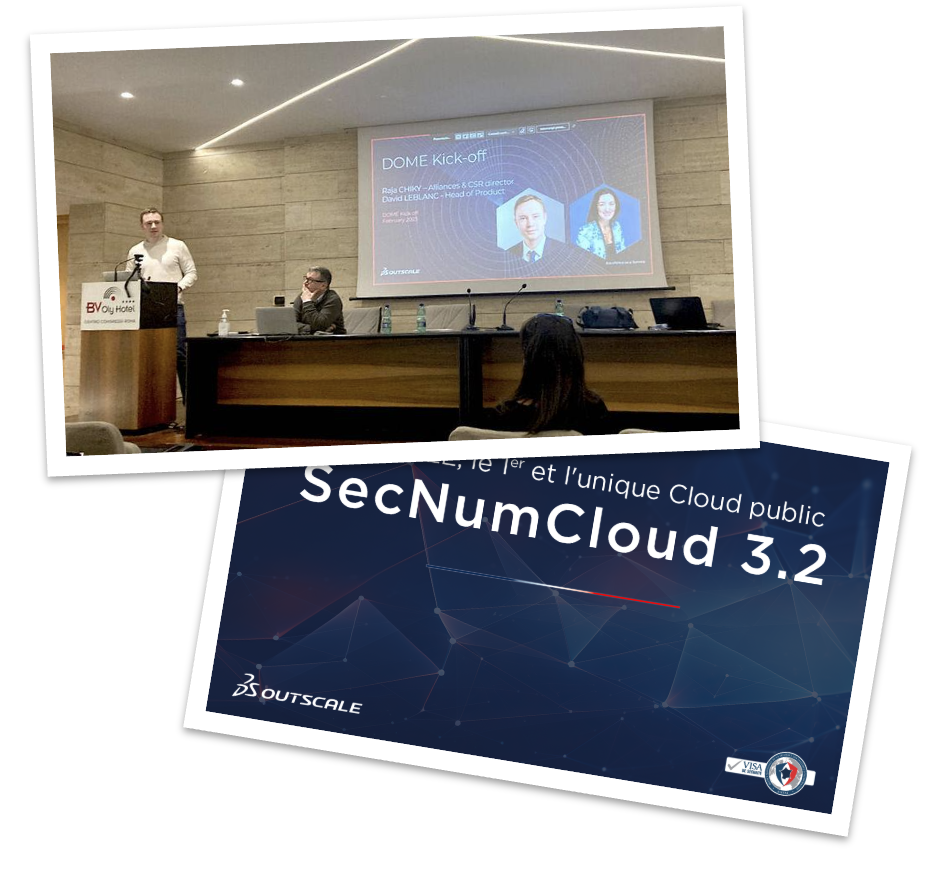
Thanks to the funds obtained, the organizational chart I had drawn up came to life. I oversaw every step: writing job descriptions, choosing consulting firms, conducting interviews—whether for contractors or future permanent employees—and setting up a comprehensive onboarding process. At the same time, I refined the product vision and launch strategy. But I wasn’t alone. This is also an important point in this book: you never succeed alone, far from it. Colleagues from all walks of life lent a hand: HR, lawyers, IT, internal communications, finance, R&D, etc. Everyone played their part within their own scope.
The result: we assembled a team of more than twenty complementary talents—product managers, designers, developers, QA engineers, system administrators, technical writers—the backbone needed to design, deploy, and operate an ambitious product. In June 2023, barely nine months after the arrival of the first recruit, we officially launched our cloud marketplace: tangible proof that a project carried out head-on, supported by the cross-functional enthusiasm of the teams, can go from sketch to reality in record time.
This experience has proved invaluable. Working on a living product on a daily basis, within a close-knit team, constantly challenges me to push my own limits, forcing me to ask new questions and learn more and more. And what better way to accelerate this learning process than a marketplace? Such a product not only brings together all the classic development issues, but also the more complex and exciting ones related to marketing, commerce, and partnerships, with their diverse business models.
Since the creation of this team and the achievement of our goals, new opportunities have come my way. I have been able to share what I have learned and discover other people’s situations, both internally and in other companies, thanks in particular to the Product Meetup SXB that I co-founded in Strasbourg—my city since 2017—with the Alsace Digitale association. This is a community dedicated to product management with the aim of promoting these practices on the banks of the Rhine.
“How can we support an existing organization in adopting agile product practices?”
It was this first question that prompted me to write the book you are now discovering. It arose from a seemingly simple moment, but one that was deeply revealing. Over coffee, a colleague asked me how he could apply agile philosophy to a physical product, and I suddenly realized that I was unable to clearly convey what I had learned to my peers. This discrepancy struck me. For my own development and the success of my projects, I had been able to create opportunities for feedback, take numerous training courses, read extensively, and establish a dynamic of continuous improvement within my team. But I did not yet know how to transpose this approach to effectively support other people or organizations.
To meet this need for support, I decided to write not a “change” manual, but a story of creation. In my view, it is by returning to the foundations—where product culture, agility, and a spirit of experimentation are born—that we can best understand how to evolve an already established organization.
As a result, many leaders today prefer to build or acquire an entirely new entity, already imbued with the desired culture and practices, and then migrate talent and activities to it. Tech giants have long understood that it is often more profitable to instill a fresh culture in a blank slate and transfer teams from an aging organization in waves than to try to uproot old habits. Building a new organization with the desired DNA is less costly—in terms of both energy and time—than revamping a colossus rooted in its historical processes.
Take Google and its galaxy of acquisitions: when it buys YouTube, Nest, or DoubleClick, it doesn’t immediately try to force the “Google” mentality on every department. Instead, it lets the young companies grow in their native soil—small tribes, rapid sprints, user obsession—and then gradually invites employees from older divisions to join these “starter” structures. The result: engineers from advertising research immerse themselves in YouTube culture, discover the cult of the creator, and bring back with them the data-driven approach that was sometimes lacking in the video team.
So my conclusion is simple: it is always easier to start from scratch to build agile working practices and a solid product culture than to transform an existing organization shaped by its history, experiences, ingrained habits, sometimes divergent interests, and frustrations accumulated over time. In my view, a key part of the success of Silicon Valley companies lies in their ability to dynamically reorganize and regularly challenge their own operating methods in order to achieve a new optimum of efficiency and innovation.
This is why this book can also be used in the context of business transformation.
“Are team performance and product quality the only pillars of success?”
In 1996, the web resembled a huge, unorganized library. Scattered pages, broken links, and fledgling search engines unable to distinguish useful information from noise. To find a site, you had to type in its exact address if you knew it, follow links from other pages, or browse through thematic directories such as Yahoo! Directory or DMOZ. You discovered sites through word of mouth, on forums, or by using approximate search engines such as AltaVista, which were often more frustrating than effective.
It was in this fascinating chaos that two Stanford PhD students, Larry Page and Sergey Brin, immersed themselves in the Digital Libraries Project, a program funded by the NSF and DARPA. In the basement of the university, they came up with a different way of mapping the web: no longer by counting keywords, but by analyzing the links between pages, like votes of confidence. Thus was born PageRank, an algorithm that would become the heart of a radically new search engine.
In September 1998, Google Inc. was founded in Menlo Park. Less than two years later, the young company gained credibility: NASA offered to host one of its first data centers at the Ames base, and the White House adopted its engine to power the FirstGov portal. These first public contracts played a decisive role: they validated the technological robustness of the engine, reassured advertisers, and positioned Google not as a promise, but as a credible player—ready to enter the orbit of the Nasdaq giants.
How was all this made possible? Looking back on the many conversations and interviews I have had the opportunity to conduct with renowned entrepreneurs, one question stands out: what really makes the difference in a career? When I compare these testimonials with my own successes, certain levers consistently emerge. These are the invisible nets that quietly support us: a certain level of education, a stable environment, access to infrastructure—whether digital, physical, or institutional. These are the discreet but decisive foundations on which individual success is built.
But if there is one lever that, in my opinion, really makes a difference—and one that everyone can influence—it is networking. None of the projects I have led have been carried out alone. Behind every success, there have been exchanges, helping hands, and human connections, starting with family, friends, classmates, and colleagues.
A network is not just a list of contacts. It is an invisible infrastructure that supports action. It provides advice at the right time, unexpected opportunities, complementary expertise, and sometimes even teammates or future partners. It is the collective energy that transforms an idea into a project, and a project into reality. And when you look closely, it is often the quality of the connections we forge that makes the difference between a stagnant trajectory and one that takes off.
Yet, from school onwards, we are conditioned to celebrate the valedictorian rather than the team that, together, took on an impossible challenge. We give the laurels to the most brilliant individual, as if the economy thrived on solitary performances. In real life, entrepreneurial success comes from alliances, complementarities, coalitions—the opposite of a ranking system that pits people against each other instead of bringing them together. It’s so obvious to entrepreneurs that it’s in their culture to help each other; it’s natural.
Some inherit a network of contacts; others have to build it brick by brick. Some circles open up by granting trust from the outset, while others require you to prove your worth before letting you in. That’s how the world works: everyone starts on the path that has been chosen for them, but the result is collective. Measuring success or failure by considering only your own contribution runs the risk of going around in circles in your own excellence or locking yourself into self-deprecation.
Networks already place individual initiatives within a broader dynamic, that of a collective whole that everyone contributes to growing. But the ease with which these networks are woven—and the richness of the connections they enable—depend on an even more fundamental factor: the ecosystem in which they take root. For a network, however promising, can only flourish in fertile soil. It is never stronger than the environment that nourishes it. A healthy ecosystem is a reservoir of skills, an education system that nurtures ideas and know-how, and a climate that is calm enough to allow people to take a chance on a risky venture. It is also a culture of information sharing and mutual trust that allows intelligence to circulate rather than being stored in silos. Above all, it is the ability to capture the value created—revenue, know-how, technological spin-offs—and immediately reinvest it in new projects. A region that lets this wealth slip away will sooner or later become a wasteland: talent will leave, initiatives will dry up, and the wheel of innovation will spin idly.
In the early 1970s, the commercial aviation market was dominated by American manufacturers. Boeing, McDonnell Douglas, and Lockheed reigned supreme, and for airlines around the world, buying an aircraft almost always meant buying American. In this context, the idea that an aircraft designed by a European consortium could compete was more of a political gamble than an industrial certainty. And yet, through a combination of determination and willpower, Airbus was born. But creating a consortium is not enough to guarantee success. It took nearly 20 years for this ambition to really take off. Twenty years for Airbus to evolve from a fragile project, supported by public subsidies and a few institutional orders, to a credible manufacturer in the eyes of the international market.
In 1972, the A300, the first aircraft produced by Airbus, made its debut. But airlines remained cautious, sales were slow, and skepticism persisted. It wasn’t until the mid-1980s, with the arrival of the A320 and its fly-by-wire technology, that the tide turned. This shift marked a break with the past: Airbus was no longer content to catch up, it was innovating and leading the way. And with this new generation of aircraft, the European manufacturer began to seriously eat into the market share of the American giants.
This success was no fluke. It was the result of long, patient, and often chaotic cooperation: engineers from several countries learning to work together, governments providing funding despite criticism, and companies agreeing to play the role of pioneers. Twenty years of effort went into proving that Europe could not only dream of aircraft, but also make them fly.
Ambitions and choices must be consistent with the ecosystem in which they operate in order to be supported by the network. A landmark product rarely arises from an isolated vision; it first takes root in a living, existing ecosystem, then moves up the ladder. It all starts with those who find immediate value in it: early adopters, the first customers, often from the same environment as the founders. They are close to the need, motivated, sometimes even involved in the design, through their feedback, their testing, or simply their contagious enthusiasm. These initial circles are not enough to ensure the viability of a product, but without them, nothing gets started. It is in this phas that the first alliances are forged in the field, based on proximity, trust, and direct usefulness.
As the product gains legitimacy, the ecosystem expands. It incorporates new profiles: integrators, distributors, consultants, and public actors. The product enters into calls for tenders. It is no longer purchased solely for its vision or quality, but also for what it represents: a credible, local, innovative alternative. Solidarity then becomes structural. It is in this spirit that measures such as the US Small Business Act require large organizations to open their markets to SMEs, with a view to achieving balance and stimulating innovation.
When the ecosystem reaches a certain level of maturity, public procurement comes into play. In the case of Airbus, it was the states themselves that structured their support in the name of industrial sovereignty: through subsidies, investments, but above all through political action. Internationally, contracts become diplomatic. The purchase of aircraft or satellites can balance trade balances. The success of the product goes beyond its initial use: it becomes a matter of alliances between nations, between economic blocs, between models of society.
LinkedIn also illustrates this trajectory. Launched in May 2003 by Reid Hoffman, the network was initially just a mirror for informal exchanges in Silicon Valley: investors, recruiters, and engineers were already maintaining a highly liquid talent market offline. Eight years later, in 2011, the Department of Veterans Affairs signed a national retraining partnership: all demobilized soldiers received LinkedIn training and a free premium subscription. This federal seal acted as a mark of quality, and in the same year, the network surpassed 100 million members and went public. The adoption curve skyrocketed: from 2003 to 2011, LinkedIn was useful; after 2011, it became indispensable. Meanwhile, in France, Viadeo was forgotten.
At each stage of growth, nothing moves forward without the active solidarity of the ecosystem: a network where skills complement each other like links in a chain. A product progresses because some people design it, others adopt it, others recommend it, and still others finance or protect it. Without this organic support, even the most brilliant innovation remains a dead letter. Success depends on the ability of stakeholders to recognize each other, understand each other’s constraints, reconcile sometimes divergent interests, and move forward together.
It is this vision of innovation that has driven me, since 2018, to volunteer with Alsace Digitale, a non-profit association whose mission is to be the digital hub of Alsace. It brings together ambitions, develops skills, and stimulates innovative initiatives across the region.
In concrete terms, this translates into meetups, hackathons, awareness-raising activities, and above all, the development of a vibrant local network. A network that connects women and men committed to regional economic development: elected officials, entrepreneurs, project leaders, students, private actors… but also enthusiastic volunteers who are convinced that digital technology can be a lever for positive and sustainable impact in our region.
Whether we believe in it or not, whether a project seems too ambitious or perfectly achievable, we collectively bear responsibility for our successes and our failures.
“What is sovereignty?”
It’s a question I’ve never really asked myself, but one to which I’ve unwittingly found an answer at the crossroads of my entrepreneurial and professional career. If I had to explain sovereignty to a five-year-old, I would tell them the following story, which sums up my vision: “Imagine that a good friend lends you their bike. At first, it’s just for fun; then, since they no longer need it, they tell you that you can keep it for as long as you want. You use it every morning to go to school; the bike becomes indispensable. A year later, your friend moves away and suddenly asks for their bike back.
Overnight, you find yourself on foot: your freedom depended on an object you didn’t own. That’s what it means to lose a piece of sovereignty. If you had sensed this, you could have, for example, lent him your favorite shoes, the ones he would wear every day. They would have become as vital to him as the bike was to you. This reciprocity would have put you on equal footing, and who knows, he might have ended up giving you the bike for good in exchange for the shoes.
Sovereignty is not about dominating others. It is about remaining in control of yourself. It is about being able to contribute, act, and choose, in order to remain a worthy partner to those around us. It is the condition for staying aligned with your friends, your body, and your environment. And it is built every day, through responsibility, effort, and respect for yourself as well as others.
It is a matter of collective choices, and therefore political choices. In the same way that this book focuses on the mechanics of the product without claiming to embrace the full complexity of business creation, it barely touches on the impact of the political framework. Politics is the ecosystem’s ability to question itself and organize itself to bring about shared success and meet current and future challenges. It is the invisible hand that can adapt regulations, secure research funding, build bridges between schools and businesses, focus investment on key sectors for the future—in short, give the ecosystem the capacity to grow. Without this ongoing maintenance, even the best networks eventually fade away, collective ambitions become archives of good intentions, and we end up thinking that the ecosystem is just a vast desert that we must leave in order to survive.
And to create a virtuous circle, it all starts with people, ideas, know-how, and the desire to learn, create, and share…

